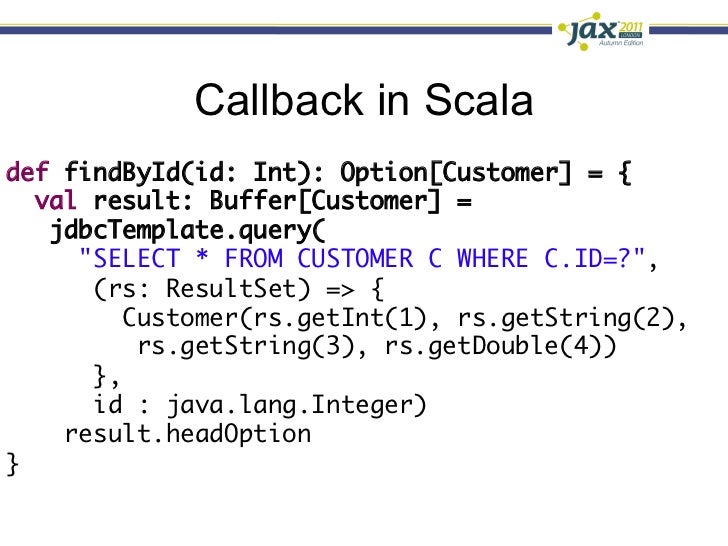Spring Jdbctemplate Insert Or Update Would Result

Code: YOu can obviously use different approaches to configure your tranactions -, or pure TransactionalProxyFactoryBean, but no matter what you use it is important to wrap it your DB callings with transaction. Spring should automatically set autoCommit to off if connection is acquired withing transaction but i would suggest to do it also in your dataSource configuration I also heard that it is much more convenient to use C3P0 that DBCP, so take a look at the forum. Code: PROPAGATIONREQUIRED PROPAGATIONSUPPORTS,readOnly 3. I then updated my maven pom.xml to include the following dependencies to support the additions I list above steps #1 and #2.
Code: PROPAGATIONREQUIRED PROPAGATIONSUPPORTS,readOnly 3. I then updated my maven pom.xml to include the following dependencies to support the additions I list above steps #1 and #2. Code: I inject testResultDao into there caller bean. Configuration is not listed here. After following the above three steps, I was able to compile and deploy my code to my local test server. When I execute the code, I still get same Foreign Key violation error.
Spring JDBC Template Batch Update Example Spring provides Batch operations with the help of JdbcTemplate, It insert or update. Execute the code and verify the result. JdbcTemplate Example to Insert. Springframework.org/schema/beans/spring-beans.xsd JdbcTemplate.update method will create a.
Postgresql Insert Or Update
In light of your recommendations I think I'm going in the right direction. So what am I missing?Hmm, it looks much better now. I can not see all of your code but tell me if you are working on bean called 'myDao' i.e if you have injected 'myDao' bean or retrieving 'myDao' from application context?
It is very important because in your application you need to forget about bean called 'testResultDao' and use 'myDao' instead cause the latter is wrapped with transactional proxy. The next thing i have not used keyHolders so can you check if testResultId is not null. Hope it helps. Hmm, it looks much better now. I can not see all of your code but tell me if you are working on bean called 'myDao' i.e if you have injected 'myDao' bean or retrieving 'myDao' from application context?
It is very important because in your application you need to forget about bean called 'testResultDao' and use 'myDao' instead cause the latter is wrapped with transactional proxy. The next thing i have not used keyHolders so can you check if testResultId is not null. Hope it helps. I was still injecting 'testResultDao' into the class which makes the call to the dao methods. However, I changed it to 'myDao', and that works.
Upgrade online to the latest cell phones & tablets, sign up for DIRECTV NOW, learn about AT&T Fiber, & enjoy excellent customer support & service. At&t internet bandwidth cap. At definition, (used to indicate a point or place occupied in space); in, on, or near: to stand at the door; at the bottom of the barrel. Stock price, stock quotes and financial overviews from MarketWatch. Www.att.com: AT&T Inc. Is an American multinational conglomerate holding company headquartered at Whitacre Tower in downtown Dallas, Texas. AT&T is the world's.
I am developing a CRUD application using spring jdbc template. I am done with insert and select. Update a row using spring jdbctemplate.


I no longer get a key constraint violation. I also confirmed the values are inserted into the tables as expected. Furthermore, I did some negative testing by hardcoding the foreign key to be a value that doesn't exist in the parent table. As expected, the transaction fails and neither the child nor the parent were inserted! I can also confirm testResultId is not null. The value being set from the keyHolder is correct.
Thank you for your help miluch!